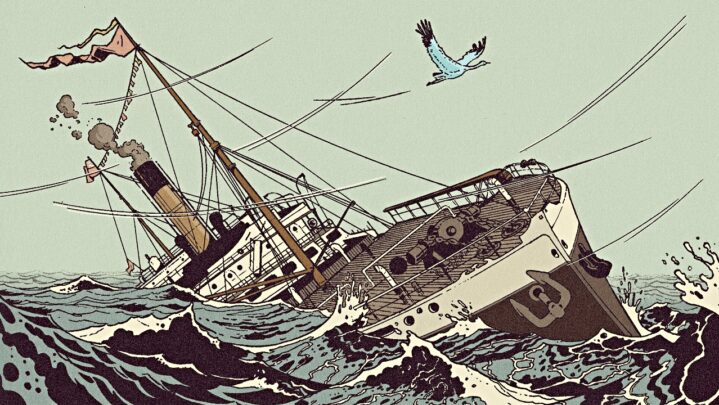The Nieuwe Haerlem, the Olifant, and the Schiedam, a fleet of three Dutch ships, left Batavia (Jakarta) on January 16, 1647, on their way back to the Netherlands. The ships were separated as they met a storm while on their way. On March 25, 1647, the Nieuwe Haerlem, now alone, arrived at Table Bay and became stranded in the shallow water. Because the cargo was valuable, consisting largely of spices, textiles, Chinese porcelain, and indigo, the captain of the Nieuwe Haerlem ordered a junior merchant, Leendert Janszen, to stay behind with about 60 crew members to look after the cargo until a larger fleet could provide lift.
The shipwrecked crew built a small fort called Zandenburch out of salvaged wood and set up camp among the sand dunes on the shore. Fish caught around the Diep River, as well as penguins, penguin eggs, and cormorants caught on adjacent Robben Island, provided a diet for the men. The indigenous KhoiKhoi provided them with livestock and fresh meat in exchange. They stayed on the Cape for almost a year until being picked up by a fleet returning home.
The junior merchant, Janszen submitted a feasibility assessment for the Dutch East India Company called Remonstrantie to VOC, in which he advised that a supply post be established on the Cape where ships could restock before heading to India.
Janszen emphasized the Cape’s strategic location, the land’s fertility, the amount of fish and animals, the availability of wood for repairs, and, most importantly, the residents’ friendliness toward foreigners in this report. That is how the wreck of the Nieuwe Haerlem gave birth to South Africa.
Keep reading successyeti.com
Also Read: Ever Wondered Where The World’s Oceans Meet: Know Here





